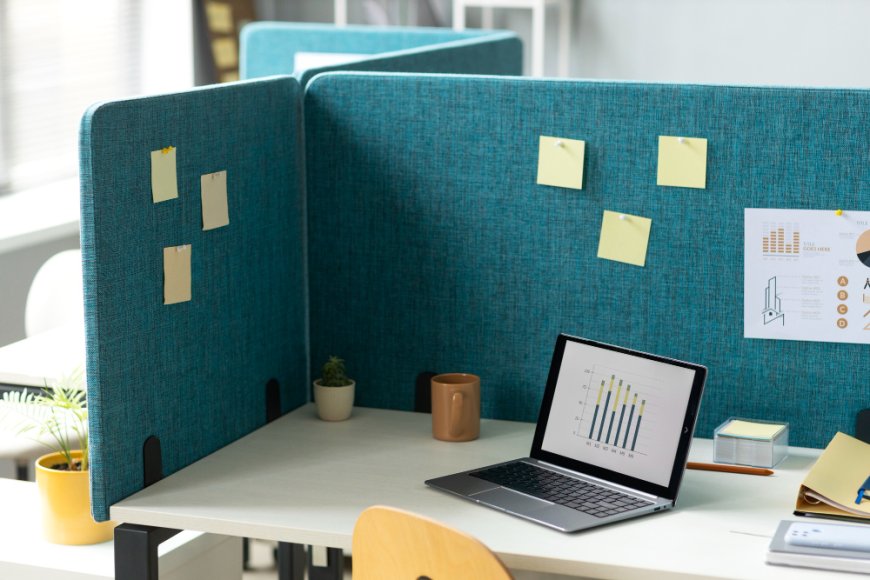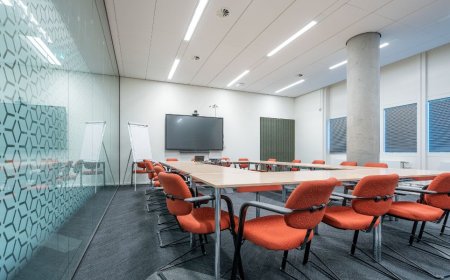Modern Office Workstations Designed for Productivity and Comfort
Discover how modern office workstations enhance productivity and comfort. Learn about ergonomic features, layout options, and benefits for hybrid workspaces.

In todays fast-paced business environment, the design and functionality of your workspace play a crucial role in overall employee performance and well-being. As the concept of the traditional office continues to evolve, so too do the tools and furniture that support itparticularly office workstations. No longer just a desk and chair, modern office workstations are thoughtfully crafted environments that blend style, technology, and ergonomics to promote both comfort and productivity.
Whether you're outfitting a small business, designing a corporate headquarters, or revamping a hybrid workspace, the right office workstation setup can make all the difference. In this article, well explore how modern office workstations are transforming the workplace, key design elements that enhance productivity, and the benefits of investing in high-quality workstation solutions.
What Are Modern Office Workstations?
Modern office workstations are modular, ergonomic, and tech-friendly setups that cater to various working styles and office layouts. Unlike outdated cubicles, todays workstations focus on flexibility, comfort, and collaboration. They are designed to adapt to individual needs while supporting organizational goals, whether that means boosting concentration, improving health, or encouraging teamwork.
These workstations typically include:
-
Adjustable desks and chairs
-
Integrated power and data ports
-
Cable management systems
-
Acoustic panels for privacy
-
Personal and shared storage units
-
Collaborative seating or open benching options
The Importance of Office Workstation Design
The physical work environment significantly impacts how employees feel and perform during the workday. A poorly designed workstation can lead to discomfort, fatigue, and even long-term health issues. Conversely, a modern, well-thought-out workspace enhances motivation, reduces absenteeism, and supports sustained focus.
Key Benefits of Modern Office Workstations:
-
Improved employee well-being
-
Greater focus and efficiency
-
Better space utilization
-
Scalable layouts for future growth
-
Aesthetic appeal and brand alignment
When designed strategically, office workstations become a productivity tool in themselves, encouraging employees to work more effectively and with greater satisfaction.
Ergonomics: The Foundation of Comfort
Ergonomics is a cornerstone of modern office workstation design. Workstations built with ergonomic principles in mind reduce the risk of repetitive strain injuries and musculoskeletal disorders. They also promote better posture and physical wellness.
Essential Ergonomic Features:
-
Height-adjustable desks: Let employees switch between sitting and standing to prevent fatigue.
-
Supportive office chairs: Adjustable seat height, lumbar support, and armrests help reduce back and neck strain.
-
Monitor arms: Position screens at eye level to minimize eye and neck strain.
-
Keyboard trays: Maintain neutral wrist positions for typing comfort.
An ergonomic workstation not only makes employees more comfortable but also helps maintain focus over long periodsboosting overall output.
Enhancing Productivity Through Design
Productivity is more than just getting things doneit's about maintaining efficiency without compromising health or morale. Well-designed office workstations are optimized for task flow, minimizing distractions while supporting seamless multitasking.
Productivity-Enhancing Features:
-
Organized layouts: Clear separation between work and personal zones helps employees stay focused.
-
Integrated technology: Built-in USB ports, wireless charging, and smart lighting improve workflow efficiency.
-
Noise control: Acoustic panels and desk dividers help create quiet zones, especially in open-plan offices.
-
Task lighting: Adjustable desk lamps reduce eye strain and enhance visibility.
-
Collaborative zones: Shared workstations or hot-desking setups encourage teamwork when needed.
Customizable configurations allow businesses to tailor workstations to specific job functions, whether it's creative design, customer service, or executive management.
Types of Modern Office Workstations
Not all workstations are created equal. The best workstation for your office depends on team size, space availability, and workflow needs. Here are some of the most common types of modern office workstations:
1. Benching Workstations
Benching systems are open, shared desks that support team collaboration. They maximize space efficiency and encourage communication while still allowing personal space.
2. Private Workstations
Ideal for employees who need quiet or perform sensitive tasks. These include enclosed or semi-enclosed spaces that offer more privacy and sound insulation.
3. Modular Workstations
These customizable systems can be reconfigured as needs change. Modular options are perfect for growing businesses or those experimenting with different layouts.
4. Standing Workstations
These include sit-stand desks, which are increasingly popular for their health benefits and flexibility. They support movement throughout the day and help fight sedentary fatigue.
5. Executive Workstations
Designed with premium materials and larger dimensions, executive setups offer extra space, integrated tech, and design features suitable for senior leadership.
Office Workstations for Hybrid and Remote Work Environments
As hybrid work becomes the norm, office workstations must accommodate employees who split time between home and the office. Flexibility is key.
Hybrid-Friendly Features:
-
Hot-desking systems: Shared workstations that can be reserved or used as needed.
-
Mobile storage: Lockable pedestals or carts help employees store belongings securely between visits.
-
Docking stations: Let employees connect their laptops quickly and start working immediately.
-
Flexible layouts: Allow rapid reconfiguration of space to support various meeting styles or team sizes.
A modern office equipped with flexible office workstations makes the transition between home and office seamless and productive.
Choosing the Right Office Workstations for Your Business
Selecting the right workstations starts with assessing your teams unique needs. Here are a few steps to help guide your decision:
1. Analyze Workflow
Understand how your teams work. Are they mostly collaborative or do they need quiet, focused space?
2. Measure Your Space
Consider ceiling height, window placement, and square footage. Choose workstation sizes that maximize usable space.
3. Define Budget and ROI
While modern office workstations can be an investment, they offer long-term returns in productivity, employee health, and retention.
4. Consider Aesthetics
The look and feel of your office play a key role in branding and employee morale. Choose finishes and layouts that align with your company culture.
5. Prioritize Flexibility
Opt for modular systems that can adapt as your company grows or shifts to new working models.
Sustainability and Materials
Todays businesses are increasingly aware of their environmental impact. Many office workstation manufacturers offer eco-friendly solutions made from recycled or responsibly sourced materials.
Sustainable Options to Look For:
-
GREENGUARD-certified furniture
-
Low-VOC finishes and paints
-
Recycled metal or FSC-certified wood
-
Durable construction to reduce furniture waste
By choosing sustainable office workstations, companies can support environmental responsibility while maintaining high-quality standards.
Final Thoughts: Designing for the Future
As workspaces continue to evolve, modern office workstations will play an even greater role in supporting employee wellness and business success. Whether you're planning a new office or upgrading an existing one, thoughtful workstation design is a smart investment that pays dividends in performance, morale, and operational efficiency.
When comfort meets productivity, everyone winsfrom your employees to your bottom line.












































